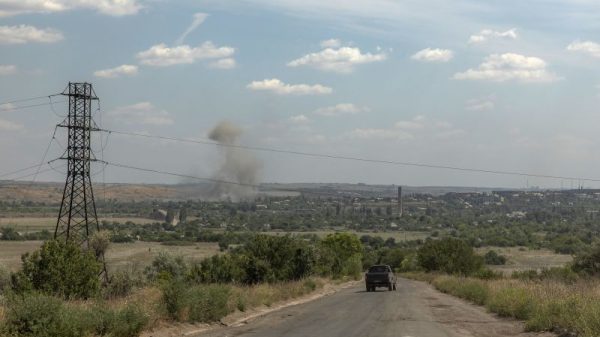Water levels at Lake Titicaca – the highest navigable lake in the world and South America’s largest – are dropping precipitously after an unprecedented winter heat wave. The shocking decline is affecting tourism, fishing and agriculture, which locals rely on to make a living.
“We don’t know what we will do from now until December because the water will keep getting lower,” said 63-year-old Nazario Charca, who lives on the lake and makes a living ferrying tourists around its waters.
Visitors have long been attracted to the blue waters and open skies of South America’s largest lake, which straddles more than 3,200 square miles across the border of Peru and Bolivia.
Sometimes described as an “inland sea,” it is home to Aymara, Quechua and Uros indigenous communities and sits at an altitude of around 3,800 meters (12,500 feet) in the central Andes mountain range, making it the highest navigable lake in the world. The extreme altitude also exposes the lake to high levels of solar radiation, which enhances evaporation and constitutes most of its water losses.
More than three million people live around the lake, relying on its waters to fish, farm and attract tourists who boost the economy of an otherwise marginalized region.
Now the lake is at risk of losing some of that magic.
This is part of a “gradual decline” in water levels at the lake in recent years, said Flores, and a recent study which examined satellite images from 1992-2020 showed that Lake Titicaca is losing around 120 million metric tons of water per year, which the authors say is primarily due to changes in precipitation and run off.
Communities that rely on fishing are struggling as low water levels adds to mounting problems: declining fish stocks due to pollution and overfishing.
Agriculture has also been impacted by drought, with regional authorities reporting that crops have suffered badly in the last harvest season. The vast majority of quinoa and potato crops, both local staples, have been affected, as have oats used to feed livestock.
The tourist economy also took a hit after boats used to ferry visitors around the lake were stranded as waters receded.
“We are extremely worried most of all because the water level is falling a lot at the moment,” said Jullian Huattamarca, 36, who sells locally made textiles to visitors to the island of Taquile.
“We want the tourists to come back, particularly foreign tourists,” he said.
The Puno region, which envelops the entirety of the Peruvian side of Lake Titicaca, has long been known as an underdeveloped and marginalized region of the country.
More recently, the economy has been battered by the effects of the Covid-19 pandemic and a wave of social unrest. Puno became the epicenter of demonstrations calling for the resignation of President Dina Boluarte, which built on outrage that has developed due to decades of inequality, allegations of corruption, and stagnating living standards.
Huattamarca said that many people have left the area in recent years, particularly during the pandemic.
“They had to, they didn’t have enough money for basic necessities like food,” he said.
And recent history suggests that the ongoing drought could push more people to leave their homes, as a previous drought in 1991 caused waves of migration as the subsistence economy collapsed due to a lack of food.
For others, such as Charca, the drought is disrupting a way of life. Charca is part of the Uros indigenous group, who live on islands made of dried totora reeds that float on the lake. For centuries, the Uros have woven the reeds into islands, as well as using them to make buildings and boats, but Charca is concerned that lower water levels mean there are fewer reeds available.
Looking toward the future, it’s hard to see respite.
El Nino, a natural phenomenon marked by warmer-than-normal temperatures in the tropical Pacific Ocean that can vastly alter the weather over South America, is currently underway.
“These conditions will contribute to the fact that there will be lower levels of rain in the Andean region,” she said.
For Connor Baker, analyst at International Crisis Group, the situation requires long-term action to protect those that depend on the lake.
“Local communities reliant on the lake for livelihoods are particularly vulnerable, underscoring the urgency of addressing the challenges posed by more intense fluctuations in the water level.”







































